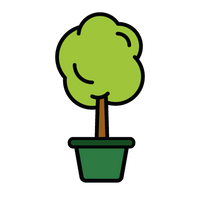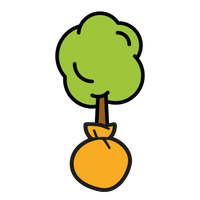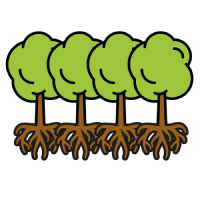We've dedicated time and care into growing your pot grown plant, so it arrives looking stunningly new and healthy.
The Late Cotoneaster is a pretty hedge that boasts delicate white flowers at the beginning of summer, which are then followed with bright-red berries in the Winter. The Lacteus is more than likely to welcome wildlife to your garden, as birds, butterflies and bees love the berries and flowers as much as we do.
Many people compare the Late Cotoneaster to the Cotoneaster Franchetii, however, the key difference between the two is that the Cotoneaster Lacteus has long arching branches and tend to trail downwards- this means they usually have to be supported by a fence or wall. In terms of hedging, you can make this plant look great if you prune it into a neat form with a neat form of draping stems, or you can even leave it to grow more informally and let it climb its way up walls and fences.















